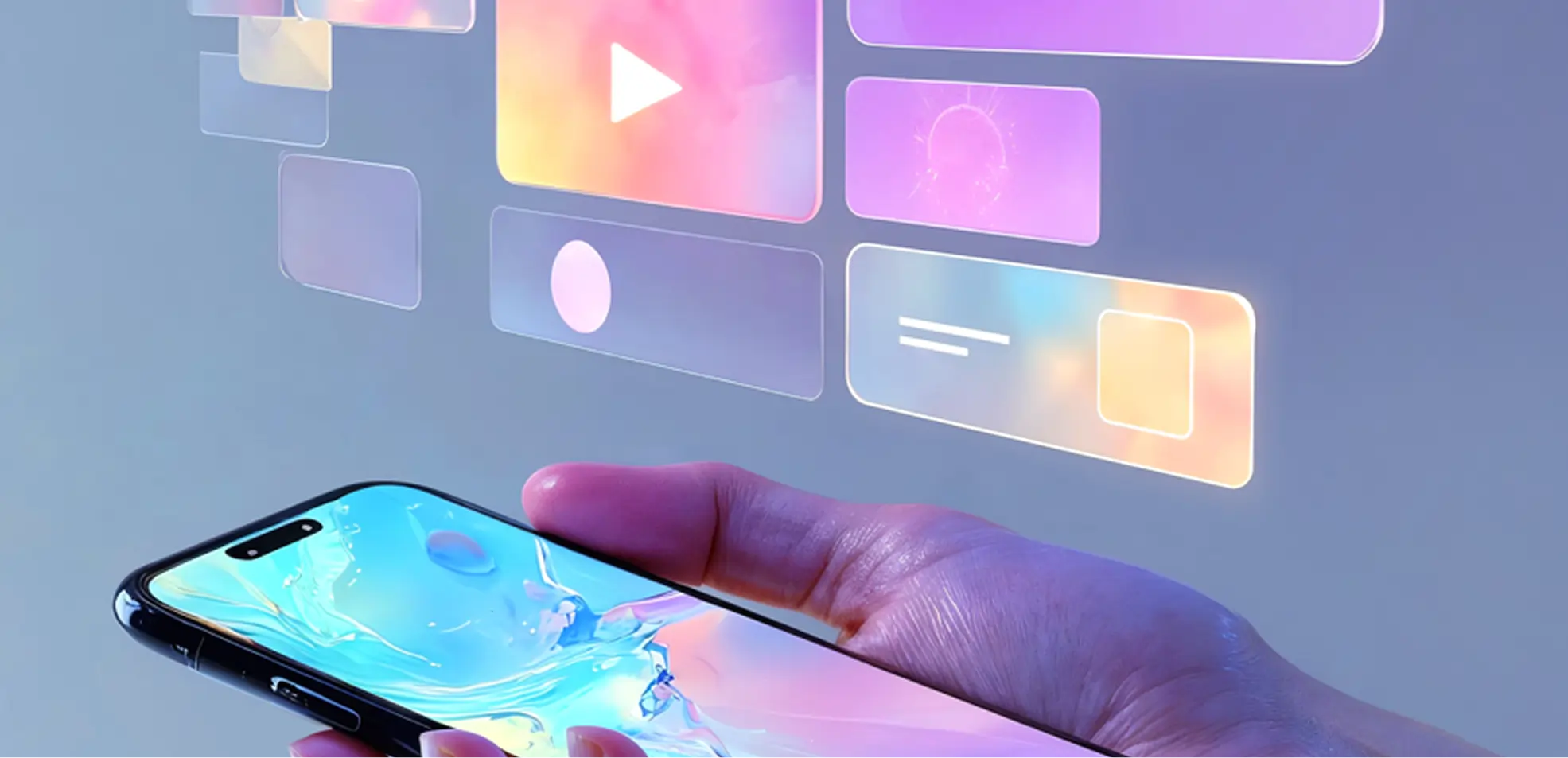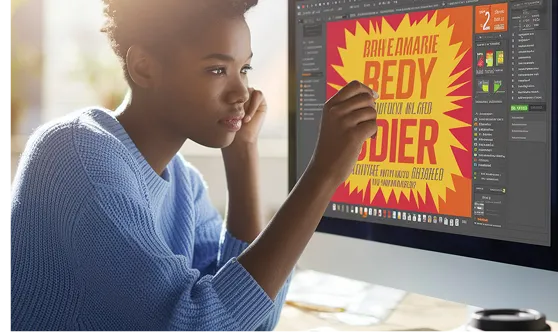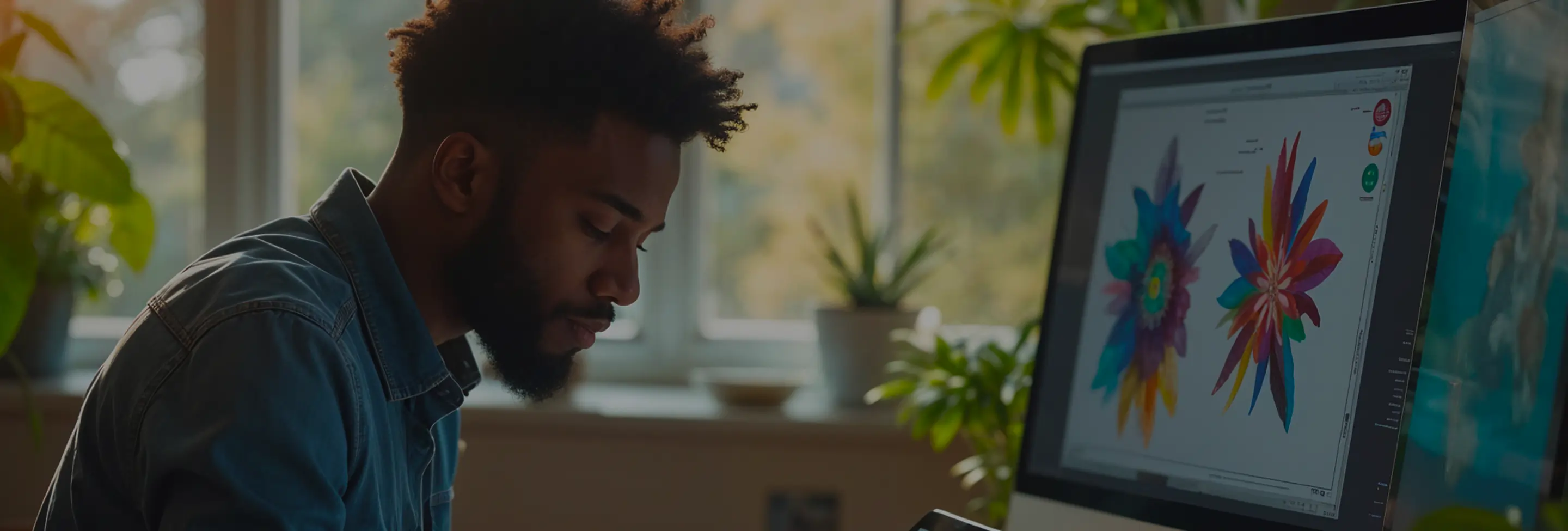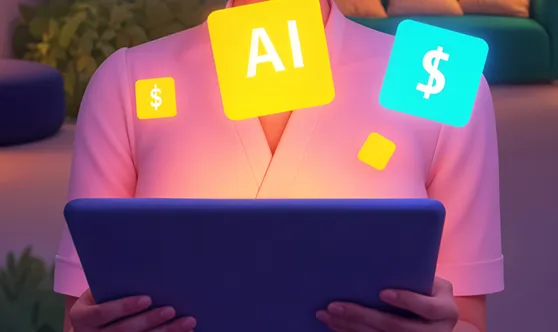
Launching a startup often means juggling numerous responsibilities, and establishing a strong visual identity is paramount to standing out in a crowded market. Through analyzing over 500 startup launches, we've identified the most critical graphic design questions that impact brand perception and growth. This guide delves into essential topics, from branding fundamentals to advanced design strategies, providing actionable insights to help startups create compelling visuals that resonate with their target audience.
A strong brand identity differentiates your startup from competitors and builds trust with your audience. It encompasses your logo, color scheme, typography, and overall visual style, all of which convey your startup's values and mission. A cohesive brand identity ensures consistency across all marketing channels, making your brand memorable and fostering customer loyalty.
Example: Consider Airbnb's evolution from a simple logo to a comprehensive brand identity that reflects community, belonging, and trust, which has been integral to its global recognition.
Common Misconception: Many startups believe that a strong product alone will build the brand. In reality, without a distinct visual identity, even excellent products can struggle to gain market visibility.
Actionable Solution: Develop a brand style guide that outlines your visual elements and ensures consistency across all platforms. This includes logo usage, color palettes, typography, and image styles.
Creating a compelling logo involves understanding your brand's essence and translating it into a simple, memorable design. Start by researching your industry and competitors to identify design trends and opportunities for differentiation. Collaborate with a professional designer to sketch concepts that reflect your brand's personality. Focus on simplicity, scalability, and versatility to ensure the logo looks good across various mediums.
Example: Dropbox's logo is simple yet distinctive, using a clean, modern design that is easily recognizable and adaptable to different sizes and backgrounds.
Common Misconception: A complex logo is more impressive. In reality, simplicity often leads to better brand recognition and versatility.
Actionable Solution: Use design tools like Adobe Illustrator or online platforms like Canva to experiment with different logo ideas. Gather feedback from your target audience to refine the design before finalizing it.
Startups can access powerful graphic design tools without breaking the bank. Canva offers user-friendly templates and a drag-and-drop interface, ideal for creating social media graphics, presentations, and marketing materials. Figma is excellent for collaborative UI/UX design, allowing real-time teamwork and prototyping. GIMP and Inkscape are free, open-source alternatives to Adobe Photoshop and Illustrator, providing robust features for image editing and vector design.
Example: A startup can use Canva to quickly create professional-looking social media posts and Figma to design and prototype their website interface collaboratively.
Common Misconception: Free tools are not capable of producing professional-quality designs. Many free tools today offer features that rival paid software, suitable for startups with limited budgets.
Actionable Solution: Start with free versions of Canva or Figma to build your design assets. As your startup grows, consider investing in premium features or additional tools that offer advanced functionalities.
Figma's cloud-based platform facilitates seamless collaboration among team members, regardless of their location. Startups can use Figma to create, share, and iterate on design projects in real-time. Features like commenting, version history, and shared libraries streamline the design process, ensuring everyone is aligned and reducing the time from concept to final product.
Example: A remote startup team uses Figma to design their mobile app interface, allowing designers, developers, and stakeholders to provide instant feedback and make updates collaboratively.
Common Misconception: Collaborative tools like Figma may be too complex for smaller teams. In reality, Figma's intuitive interface makes it accessible for users with varying levels of design expertise.
Actionable Solution: Implement Figma as your primary design tool and set up regular design reviews within the platform to encourage feedback and collaboration. Utilize Figma's tutorials and community resources to onboard team members effectively.
Graphic design plays a pivotal role in communicating your brand message and engaging your target audience. Effective design elements in marketing materials—such as websites, social media posts, email campaigns, and advertisements—attract attention, convey professionalism, and drive conversions. Consistent and visually appealing designs enhance brand recognition and support marketing goals by making content more shareable and memorable.
Example: Mailchimp's visually cohesive marketing campaigns use consistent colors, typography, and imagery to strengthen brand identity and enhance campaign effectiveness.
Common Misconception: Marketing can be successful without strong graphic design, relying solely on content quality. However, even the best content needs compelling visuals to capture and maintain audience interest.
Actionable Solution: Integrate your brand's visual elements into all marketing materials. Use templates for social media, email newsletters, and presentations to maintain consistency and streamline the creation process.
Designing a startup website requires a balance of aesthetics, functionality, and user experience. Best practices include:
Example: Slack's website features a clean layout, clear navigation, responsive design, and strong CTAs, which collectively enhance user experience and drive conversions.
Common Misconception: A flashy, complex design impresses visitors. In reality, a clean, user-friendly design often leads to better engagement and higher conversion rates.
Actionable Solution: Utilize website builders like Webflow or WordPress with customizable themes that adhere to design best practices. Conduct user testing to identify and address usability issues before launch.
Effective UX/UI design focuses on creating intuitive and enjoyable user experiences. Startups should:
Example: Spotify's user interface is known for its simplicity and ease of navigation, allowing users to quickly find and play music, enhancing overall user satisfaction.
Common Misconception: UX/UI design is only about aesthetics. In reality, it encompasses functionality, usability, and the overall experience of the user interacting with the product.
Actionable Solution: Invest in user research and usability testing to inform your design decisions. Use tools like Sketch or Figma to create prototypes and gather feedback before finalizing designs.
Motion graphics can effectively capture attention, convey complex information, and add dynamism to a brand's visual identity. They enhance storytelling by bringing static designs to life, making content more engaging and memorable. Motion graphics are particularly useful in explainer videos, social media content, and interactive website elements, helping to communicate the brand's message in a visually appealing manner.
Example: Stripe uses motion graphics in their explainer videos to simplify complex financial concepts, making their services more accessible and understandable to users.
Common Misconception: Motion graphics are unnecessary for brands with limited budgets. While they require investment, even simple animations can significantly enhance visual appeal and engagement.
Actionable Solution: Start with basic animations using tools like Adobe After Effects or online platforms like Animaker. Focus on creating short, impactful motion graphics that align with your brand's message and enhance user experience.
Effective collaboration with graphic designers involves clear communication, defined expectations, and mutual understanding of project goals. Startups should:
Example: A startup working with a graphic designer on their branding can hold regular meetings to discuss progress, provide feedback, and ensure the designs align with the brand's vision and goals.
Common Misconception: Designers work best with minimal guidance. In reality, a lack of direction can lead to designs that don't meet the startup's needs or expectations.
Example: A startup working with a graphic designer on their branding can hold regular meetings to discuss progress, provide feedback, and ensure the designs align with the brand's vision and goals.
Common Misconception: Designers work best with minimal guidance. In reality, a lack of direction can lead to designs that don't meet the startup's needs or expectations.
Actionable Solution: Create detailed design briefs and hold kickoff meetings to align on objectives. Use collaborative platforms like Figma or Adobe XD to share designs and gather feedback efficiently.
When hiring a graphic designer, startups should consider:
Example: A startup focused on tech solutions might prioritize designers with experience in digital interfaces and UI/UX design, ensuring their designs are both aesthetically pleasing and functional.
Common Misconception: The cheapest designer is the best option for startups on a budget. However, low-cost designers may lack the quality and reliability needed for impactful branding.
Actionable Solution: Invest in a designer who offers a balance of quality, experience, and cost. Consider freelance platforms like Upwork or Behance to find talented designers with competitive rates and strong portfolios.
Ensuring accessibility involves designing products that are usable by people with diverse abilities. Startups should:
Example: Apple's website incorporates high-contrast modes, keyboard navigation, and screen reader compatibility, ensuring their content is accessible to a wide range of users.
Common Misconception: Accessibility is only relevant for users with disabilities. In reality, accessible design benefits all users by improving overall usability and user experience.
Actionable Solution: Incorporate accessibility checks into your design process from the beginning. Use accessibility plugins and conduct user testing with diverse participants to identify and address potential barriers.
Common graphic design mistakes startups should avoid include:
Example: A startup that uses multiple fonts and mismatched colors across its website and marketing materials can appear unprofessional and disjointed, undermining user trust.
Common Misconception: Using more design elements enhances visual appeal. However, simplicity often leads to clearer communication and a more professional appearance.
Actionable Solution: Establish a consistent brand style guide, prioritize simplicity in design elements, and ensure all visuals are optimized for various devices. Regularly review and update designs to maintain quality and coherence.
Effective graphic design is a cornerstone of a startup's success, influencing everything from brand perception to user engagement. By addressing these critical questions and implementing expert strategies, startups can create compelling visuals that not only attract their target audience but also foster long-term growth and loyalty. Whether you're just beginning to shape your brand identity or looking to refine your design approach, these insights provide a solid foundation for achieving impactful and memorable design outcomes.




Subscribe to our newsletter to receive $100 off your first month of Tapflare's flat rate unlimited design and development service. Your coupon code will be sent to your email.